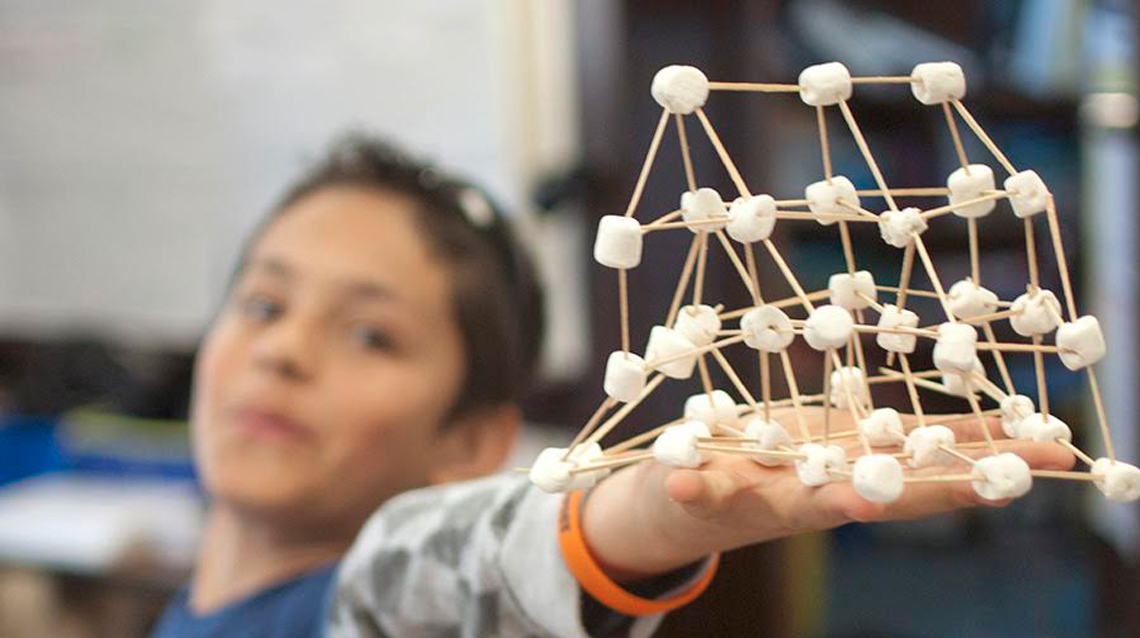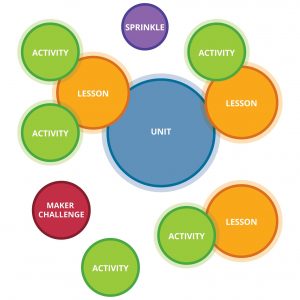Brief
TeachEngineering Digital Library
Standards-Aligned STEM Curricular Materials—From an Engineering Point of View


The TeachEngineering Digital Library is a free, online collection of K–12 curricular materials that focus on integrating engineering into science learning.
The TeachEngineering Digital Library is a free resource for both in-school and out-of-school educators to enhance their STEM teaching repertoires. This growing online collection is composed of more than 1,500 original K–12 engineering curricular materials, which were created and tested in classrooms across the nation through teacher/faculty partnerships at engineering colleges. Freely available at TeachEngineering.org, these comprehensive STEM lessons and hands-on activities use engineering to integrate science and math via hands-on, inquiry-based activities relevant to youth (e.g., Engineering in Sports), and are aligned to the Next Generation Science Standards; Common Core State Standards, mathematics; International Technology and Engineering Educators Association Standards; and other science, math, and technology academic standards. A majority of the funding to create these materials was provided by the National Science Foundation.

The K–12 engineering curricular materials provided in the TeachEngineering collection incorporate approaches and skills to help youth view and interact in the real world. The TeachEngineering collection provides educators with reliable curricula to convey the engineering design process, engineering habits of mind, systems thinking, and problem solving.
TeachEngineering’s K–12 materials are presented in five different formats: lessons, hands-on activities, units (groupings of lessons and activities), sprinkles, and maker challenges. The thorough lessons and hands-on activities provide standardized components such as learning objectives, correlated educational standards, background information, activity prep and procedures, vocabulary, engineering connections, embedded assessment activities, and student worksheets and handouts. Some of the most popular activities are also presented as “sprinkles,” which are short “tastes” of engineering designed for quick teacher and nonteacher prep, making these investigations ideal for after-school clubs and other informal environments. Maker challenges are new to the collection, providing teacher prompts for open-ended, self-directed challenges that support the popular maker movement.

The amount and depth of engineering varies across the curricular types. With lessons and activities from more than 50 different contributors—mainly research-rich U.S. engineering colleges and departments that have been accredited by the Accreditation Board for Engineering and Technology—the collection boasts a wide and deep assortment of topics.
The K–12 curricular materials range from variations on classics (e.g., straw bridges, spaghetti soapbox derby) to activities for AP Calculus and advanced programming classes (e.g., robotics peripheral vision).
Other materials tie engineering to culture, current events, and problem solving (e.g., Harry Potter, Olympic engineering, asteroid impact) or the latest research topics (e.g., next-generation surgical tools in the body, tissue mechanics, gait analysis, quantum dots and colors, Prosthetic Party, Wear’s the Technology?).
Overarching units cover topics such as navigation, energy, motion, forces, simple machines, the solar system, the environment, biomedical engineering/human body, electricity, air pollution, the rock cycle, biodomes, digital mapping, assistive devices, natural disasters, and cells.
Other materials focus on altruistic projects and solving real-world issues (e.g., service-based engineering design projects, redesigning a classroom for the visually impaired, Tippy Tap Plus Piping, Environmental Challenges in China: From Rural Villages to Big Cities, Off-Road Wheelchair Challenge, and Design a Carrying Device for People with Crutches).
A collection of 10 activities describes what you need to plan an Elementary School Engineering Design Field Day for your school or district.
Most activities use everyday supplies found at grocery and hardware stores (e.g., Engineer a Sneaker), whereas others incorporate LEGOs, Arduino, and 3-D printing technologies (e.g., LilyTiny Plus Monsters Are Alive!).
About 100 of the activities also feature two-minute recap videos to quickly show teachers the essence of the activity—with more videos being added every month.
You can follow TeachEngineering on social media on Pinterest, YouTube, Facebook, Instagram, Twitter, and LinkedIn.
Dua Chaker (Dua.Chaker@colorado.edu) is technical editor at TeachEngineering in Boulder, Colorado.


